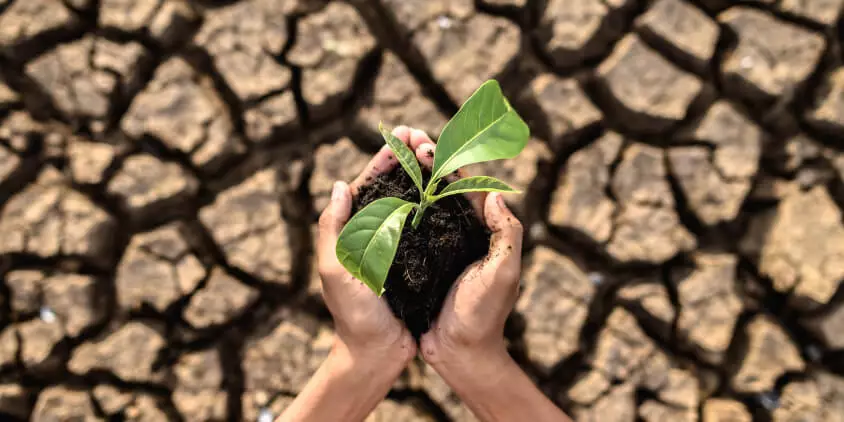
Soil Degradation: Harmful Effects & Promising Solutions
Soil degradation spreads at an alarming rate, endangering land fertility and productivity, and, by extension, the world’s food supply. Global food security, ecosystem health, and sustainable development are all at risk from soil degradation, which is a result of both human and natural factors.
Protecting the soil, this valuable resource, requires our understanding of land degradation’s context, causes, effects, and viable remedies. Thankfully, cutting-edge innovations like remote sensing and precision agricultural technologies provide effective resources for monitoring soil health, carrying out targeted interventions, and encouraging sustainable land management practices to ensure the soil’s long-term preservation.
What Is Soil Degradation?
Soil degradation refers to the loss of land’s physical, chemical, biological, and ecological qualities due to either natural or human-caused disturbances. Some examples of soil degradation processes are the exhaustion of nutrients and organic matter, soil erosion, acidification, desertification, and pollution. There are a number of factors that affect how much land deteriorates, including:
- the land’s starting condition;
- the nature and severity of the stresses put on it;
- the land’s reactions to those stresses;
- the feedback from those reactions on the natural assets .
Preventing soil retrogression and degradation, which reduce the ecosystem’s potential to produce commodities and services for humans, is essential to preserving global food security. Taking prompt actions to reduce soil deterioration improves land quality and productivity, protecting this irreplaceable resource for the future.

What Causes Soil Degradation
There is a wide range of factors that can set off land degradation. All soil degradation causes, however, fit neatly into one of four groups.
| Type | Reasons and consequences |
|---|---|
| Biological | Decreased microbial activity due to destructive biochemical reactions, especially in bare/unprotected earth, reduces yields and makes land less amenable to crop cultivation. |
| Chemical | Unfavorable changes in soil chemistry (caused, particularly, by synthetic fertilizers and pesticides) diminish plant nutrition: beneficial microbes and humus content decline; and the pH of the ground shifts. |
| Ecological | Decreased land productivity due to environmental factors, mainly climate change (altered precipitation patterns, increasing temperatures, extreme weather events). Deforestation and the loss of ground cover contribute to the ecological degradation of soil by exposing it to erosion and causing disruptions in ecosystems. |
| Physical | Loss and depletion of fertile topsoil due to physical impacts (floods, surface runoff, landslides, winds and storms, intensive tillage, heavy machinery use). Long-term physical degradation harms soil fertility, composition, and structure. |
Land degradation occurs naturally but is exacerbated by human activities. Deforestation, industrial agriculture, overgrazing, and urbanization have all accelerated degradation over the past few decades. Let’s take a closer look at the main human-driven reasons for soil degradation:
- Poor farming practices: monocropping, which depletes certain nutrients from the field; inefficient irrigation, which negatively affects the earth’s structure and nutrient availability; and overreliance on chemical fertilizers and pesticides, which leads to degraded soil health.
- Aggressive cultivation practices like deep plowing and heavy tillage weaken soil aggregates and disrupt the structure of the ground.
- Misusing fertilizers can affect soil health and beneficial organisms through nutrient imbalances, environmental pollution, and acidifying the land.
- Overgrazing causes soil degradation by depleting vegetation cover and increasing ground compaction.
- Deforestation. Clearing forests for agriculture, logging, or urban expansion destroys the protective vegetative cover of the land.
- Erosion. Topsoil, organic matter, and nutrients can all be lost to water erosion, which occurs as a result of overwatering and poor drainage. Similarly, fine particles are blown away by wind erosion when drought-stricken fields are left bare.
- Urban expansion involves land conversion, ground sealing, and infrastructure construction, all of which lead to the loss of fertile soil and land degradation.
- Industrial and mining activities can introduce toxic pollutants and heavy metals into the land, making it unfit for agricultural or ecological purposes.
- Soil contamination is a threat to human health and the environment, caused by the discharge of toxic pollutants and chemicals through industrial spills, incorrect waste disposal, or agricultural runoff.
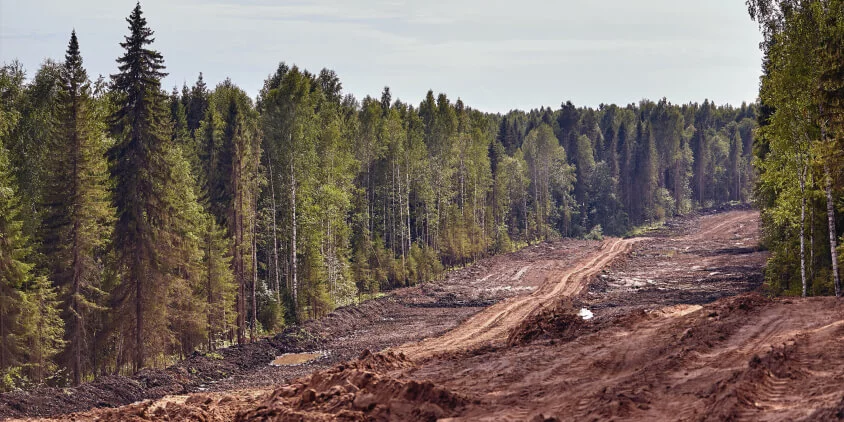
Soil Degradation Effects And Consequences
Soil degradation has far-reaching negative consequences, including landslides, flooding, desertification, water contamination, and a drop in food production worldwide. Meanwhile, the agriculture sector faces a variety of direct implications daily.
Soil Salinization
When the salt content of the earth rises to dangerous levels, a process known as soil salinization takes place. This issue arises when salts build up in the plant root zone, often due to inadequate watering, high evaporation rates, or bad drainage. Soil salinization slows crop growth and can even render land unsuitable for cultivation.
Soil Acidification
Decreases in soil pH lead to increased acidity, a phenomenon known as “acidification.” Inappropriate crop or fertilizer selection is usually to blame. Acidification can affect the microorganism population, which in turn affects land ecosystem productivity and the rate of nutrient cycling. Acidity further worsens land degradation by breaking down aggregates in the earth and weakening the earth’s structural integrity.
Organic Matter Loss
Organic matter loss, also known as dehumification, occurs as a result of land degradation and other long-term processes. Organic matter acts as glue and binds particles together, making the ground structure more stable. Land erosion and fertility loss due to natural or man-made causes become more likely when the earth contains a lower percentage of humus.
Soil Compaction
Most soils perform best at a density of around 1.2 t/m3. However, as a result of repeated runs by heavy agricultural machines over the same areas, nowadays densities of 1.4–1.5 t/m3 are not uncommon. As plant roots can’t sprout through such a thick mass, compaction has a devastating effect on agricultural crop growth and development.
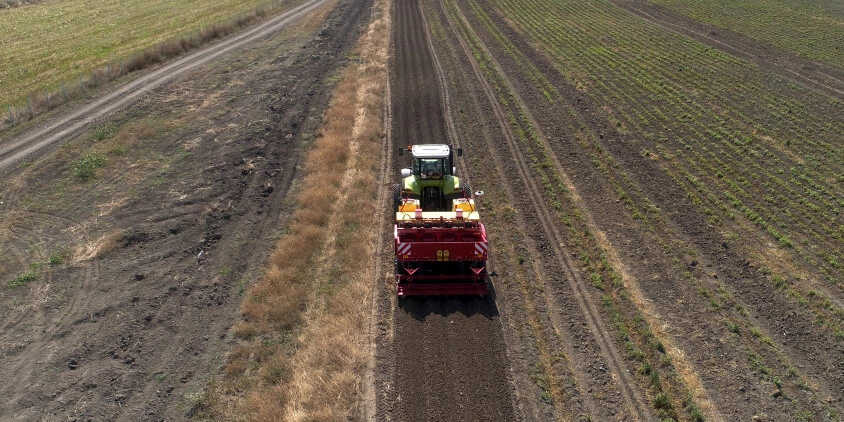
Loss Of Land Quality And Productivity
The topsoil contains roughly half of the ground’s accessible phosphorus (P) and potassium (K). When topsoil is lost, nutrients like nitrogen, phosphorus, and potassium are also lost, reducing the crop yield. The good news is that this nutrient deficiency can be made up for by applying additional fertilizer. However, severe soil erosion and degradation lead to shallow rooting depth, weak subsurface structure, and overcompaction of the ground, resulting in a loss of productivity that cannot be compensated with supplemental fertilization .
Loss Of Arable Land
Multiple forms of land degradation that are currently impacting agricultural regions all over the world pose a threat to global food security. Aridity, decreased vegetation cover, erosion and salinization, and the depletion of organic carbon are all assumed to play a significant role in the loss of arable land.
Pollution And Clogging Of Waterways
Topsoil acts as a natural filter for sediment, but it is being lost due to land degradation. When topsoil is washed away, it brings with it sediments and pollutants, including fertilizers, pesticides, and heavy metals. This results in increased sedimentation, which can clog waterways, impair water flow, and degrade water quality.
Loss Of Biodiversity
Degradation of soil and loss of biodiversity go hand in hand. Land degradation has an adverse effect on the microorganisms living there. Simultaneously, soil integrity and drainage are affected by the movement and feeding activities of biota. Thus, declining biodiversity speeds up soil loss processes .
Increase In Flooding
When land quality deteriorates, the ground loses some of its capacity to absorb water. Thus, rainwater flows over the surface. More water (perhaps laden with sediments, which exacerbate the problem) will flow into streams, rivers, and other water bodies, increasing the risk of flooding.
Desertification
Desertification occurs as a side effect of soil degradation when nutrients in once-fertile land are reduced, making the area less suitable for plant growth. Climate change, exacerbated by human exploitation of land, is hastening the spread of desertification. Erosion from wind and water compounds the problem by removing fertile topsoil and leaving only a barren, sterile mixture of dust and sand.
EOSDA Crop Monitoring
Using satellite monitoring for remote fields management in one platform!
How To Fix Soil Degradation
Reducing soil degradation demands the consistent use of sustainable land management techniques over time. Though preserving land’s health and fertility is a marathon, we will go through some tried-and-true ways to prevent or stop soil degradation that you can start using right away:
- Apply conservation tillage techniques. Reduce or eliminate intensive tillage practices that disturb the earth’s structure and contribute to degradation. Conservation tillage methods, such as no-till or reduced tillage, help to retain moisture, improve organic matter content, and minimize land degradation.
- Practice crop rotation by alternating the types of crops grown in your particular fields each season. This helps to break pest and disease cycles, enhance soil fertility, and reduce the risk of nutrient depletion.
- Alternate crops using strip cropping. Commonly, this strategy entails rotating crops from one strip to another annually to improve degradation management. Effective soil degradation solutions center on strip-cropping rotations, in which annual grasses and legumes are swapped out for grain and row crops .
- Avoid over-irrigation. Use efficient irrigation methods, such as drip irrigation, to prevent unwanted outcomes like secondary salinization and sodification of fields.
- Apply the right amount of fertilizer. VRA (variable rate application) based on soil diagnostics and satellite imagery analytics can help determine how much fertilizer is needed in each zone to achieve the desired yield without causing harm to the land and the surrounding environment.
- Aim for organic farming. To help prevent soil degradation, reduce your use of chemical fertilizers and look at organic options. When combating pests, choose chemical-free IPM (integrated pest management) practices to avoid pesticide drift.
- Plant cover crops, such as legumes or grasses, while your cash crop isn’t in season. Cover crops protect the land from degradation, reduce weed growth, improve earth structure, and increase organic matter content.
- Adopt contour farming. By collecting precipitation behind the ridges, contour farming mitigates land degradation and water runoff.
- Practice terrace farming on the slopes. Agricultural terraces can be used to reduce the hillside grade, minimizing the potential for surface water flow to cause slope erosion. Furthermore, terrace farming enhances pedogenetic processes .

Even if land conservation isn’t part of your typical agricultural practice, it’s crucial to keep an eye out for it. Reforestation and land reclamation, for example, are not immediately tied to farmers’ day-to-day operations, but they are essential to the conservation and expansion of the world’s arable land without damaging its fragile ecosystems. By implementing at least some of the mentioned soil degradation management strategies, you will contribute to the preservation of land resources for future generations.
How To Prevent Soil Degradation With EOSDA Crop Monitoring
The degradation of the land has a significant impact on its agricultural productivity. In other words, as land degradation progresses, crop yields will inevitably fall. To avoid this, it is crucial to keep a close eye on the fields and notice any early warning signs of degradation.
Given the longevity and complexity of the soil degradation process, any approach to preventing it must be consistent. For this reason, EOSDA Crop Monitoring provides a suite of crop analysis tools to keep tabs on the current state of the field and, with the help of historical data, track dynamics and trends to anticipate potential changes in crop output.
Degraded, low-yield soils need more attention and care, like extra fertilizing, because they aren’t producing as much as they may. EOSDA Crop Monitoring’s productivity maps can be of assistance here, dividing fields into zones according to their productivity, which can then be used to calculate how much phosphorus and potassium (PK) fertilizer should be applied to each zone.
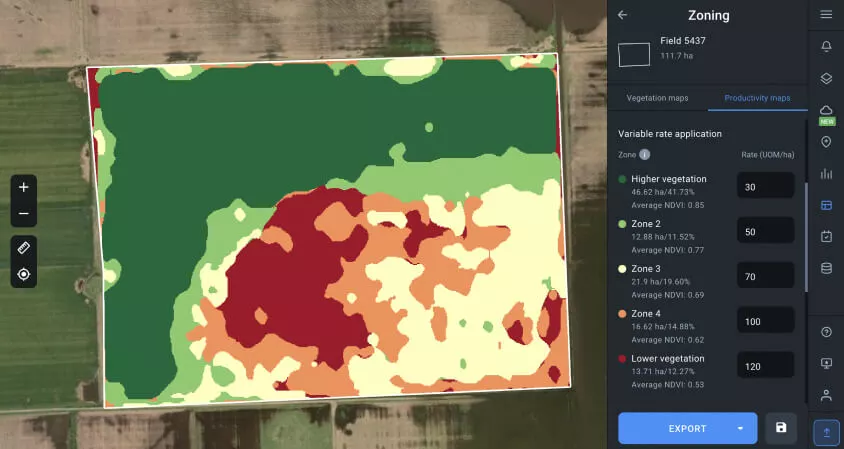
The direct short-term results of land degradation are another thing you can monitor. Using a number of vegetation indices to track the development of your crops over time is one such method. Vegetation maps reflect regular field updates, allowing for immediate reactions to emerging problems.
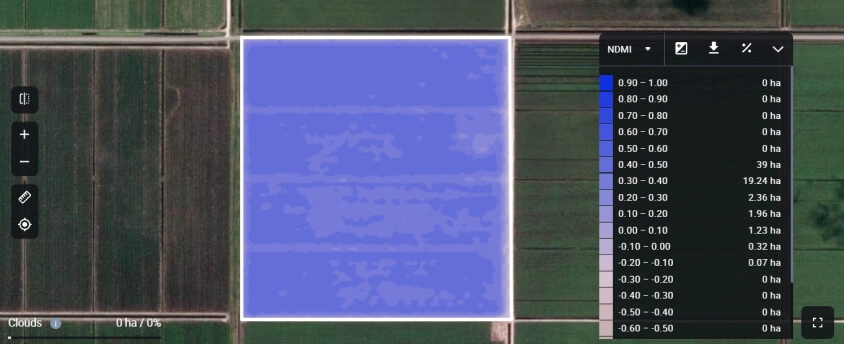
On top of that, we can tailor solutions for monitoring and managing land degradation to meet the unique requirements of individual farms. High-resolution digital soil mapping based on satellite imaging and mathematical models is just one option; it gives farmers a clear picture of the land’s current condition so they may take measures to prevent soil degradation. Our unique multi-purpose EOS SAT-1 satellite can improve soil mapping and crop monitoring, successfully collecting ready-to-use images in 11 agri-related bands.
There are various ways to prevent soil degradation, but ultimately, it is up to the farmer to keep an eye on progress and choose the methods and strategies that will provide the most potential for future crop success.
Why Control Of Soil Degradation Is So Critical
Let’s start by addressing the question of how soil degradation affects the environment. Land degradation is both the offspring and the parent of many processes that threaten the viability of life on Earth. It seems like a worthy reason to take action against this threat.
Now, to the meat of the matter. Fixing land degradation will keep farmland productive enough to feed a growing population. Land conservation helps sustain biodiversity and supports ecosystems. Plus, healthy soils act as a carbon sink, sequestering carbon dioxide and thus mitigating climate change.
Worldwide adoption of soil conservation practices will ensure the long-term viability of farming and protect the planet’s natural resources. By putting an end to soil degradation, we ensure that future generations will inherit healthy ecosystems, reliable food supplies, and a thriving world.
About the author:
Petro Kogut has a PhD in Physics and Mathematics and is the author of multiple scientific publications. He is the Soros Associated Professor as well as the head of the department of differential equations in the Oles Honchar Dnipro National University and has received a number of grants, prizes, honorary decorations, medals, and other awards. Prof. Dr. Petro Kogut is a science advisor for EOSDA.
Recent articles

Analyze 2025 & Plan Your Best Year Yet: LandViewer Christmas Offer
It’s the most wonderful time of the year! The Christmas holidays are here, and so is your chance to analyze 2025 and plan a prosperous 2026 with more affordable Pro plans in LandViewer.

EOSDA Models Climate Change Impact On Sugarcane Yields
EOSDA modeled future temperature, rainfall, and other climate impacts on Veracruz sugarcane. The results help growers plan long-term adaptation strategies, including timing, varieties, and irrigation.

EOSDA LandViewer Black Friday Sale: Exclusive Offers & Giveaway
This Black Friday, LandViewer offers new users the chance to save on monthly plans, get extra months with yearly subscriptions, and participate in a free annual plan giveaway.